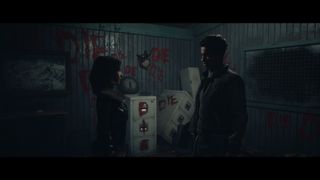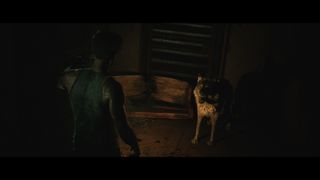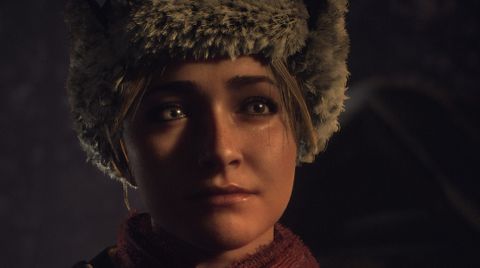Our Verdict
Technical issues and lack of a substantial upgrade aside, Until Dawn remains the perfect interactive horror movie.
PC Gamer's got your back
What is it? The first truly successful interactive horror movie, finally getting a PC release.
Release date October 4, 2024
Expect to pay £60/$60
Developer Ballistic Moon
Publisher PlayStation Publishing
Reviewed on Radeon 5700 XT, i5-9600K, 16GB RAM
Steam Deck Unknown
Link Official site
Something magical happened in 2015. Prior to Until Dawn's original release, nearly every attempt to produce a genuinely compelling interactive movie (an ideal games had been pursuing for decades) would invariably fall in one of two categories: either a noble failure or a spectacular one. And then, almost inconspicuously, Supermassive made it happen. The irony is it didn't need much to improve upon the schlocky FMVs of the 1990s, just a tech upgrade and some better-written dialogue. Oh, and attach its ambitions to the single cinematic genre that perfectly complements the idiosyncrasies of an interactive medium: the teen slasher.
Nearly a decade later, we're finally able to experience all the grisly murders and bickering on PC, in a new, remastered version featuring a visual overhaul and some slight narrative additions.

Eight high-school friends arrive at a remote mountain lodge on the anniversary of a tragedy that drastically changed their lives—most of all Josh's, their host and scion of famed horror director, Bob Washington. It's a gathering meant to heal old wounds and reinvigorate waning relationships. In other words, a search for closure. But familiar bitterness resurfaces and new causes for antagonism emerge in the group's ever-shifting social dynamics as the reunion starts under the worst auspices.
Blackwood Mountain itself seems inimical to the kids' presence: heavy snowfall obscures their surroundings, the path is pockmarked with deadfalls, and even the front door to the Washington mansion has frozen shut as local wolves and stags become increasingly restless at the intruders' presence. And that's before the real dangers start revealing themselves in forms both otherworldly and chillingly mundane. Taking control of a different character per scene, I have to keep as many of them alive (if not necessarily friendly with each other) through an increasingly nightmarish ordeal.
Supermassive's triumph, where so many other studios had previously failed, rests on two key design choices. The usefulness of the multi-protagonist setup, especially when deprived of a manual save option, is that even the simplest action carries an air of finality—characters may die at any moment, permanently and irrevocably. And the brilliance of aligning this with the narrative trappings of the venerable teen-slasher genre is that the endless body count accumulated in sequel upon sequel of Friday the 13th, Halloween and A Nightmare on Elm Street has conditioned us to accept such deaths as natural parts of the story. Whereas in Quantic Dream's emo procedurals losing a character registers as a fail state, here it feels inevitable, desirable even—a shiver-inducing reminder of what the stakes are for those still trying to survive.
The kids are alright

Nonetheless, for all their bickering and pointless intrigue, it's a likeable enough bunch that I'd prefer to keep most of them alive. To achieve that, it's vital I make the right decisions at key moments based on various bits of information scattered around the lodge environs and good ol' common sense, as well as respond in a timely manner to the tense QTE sequences that pop-up during chases, violent confrontations, and other potentially dangerous situations.
Both types of challenge feel better balanced than in other Supermassive releases. Life-or-death dilemmas, for example whether to hide or keep running from a bloodthirsty pursuer, may seem arbitrary at first, but a thorough survey of my surroundings and heeding the premonitions triggered by totems discovered off the beaten path would typically guide me true. Even when an unfortunate choice led to a character being summarily slaughtered (RIP, Jess), looking back I always realised there were enough contextual clues to have made the right call. And, for once, QTEs are perfectly implemented: mercilessly-timed (especially compared to The Quarry where they were almost perfunctory) so I could never let my guard down but never veering into unfair territory, nor plagued by the bugs that ruined numerous such sequences in The Dark Pictures Anthology.
Of course, for any of these perilous situations to register as meaningful, for the player to become invested in the gang's continued survival, the game must first make you care for them. Until Dawn succeeds at that, largely due to Graham Reznick and Larry Fessenden's spirited writing and nuanced characterisation. What initially seems like a collection of traditional high-school archetypes (Matt, the pushover; Ashley, the nerd, Emily and Jess vying for the queen-bee spot, that is, once they run out of people to bully) acquires layers of complexity the longer you spend with each of them.

Mike's caring nature clashes with his jock credentials. Sam remains the moral compass of the group throughout but will lose her patience on occasion. And Josh, well, his inner demons need a whole chapter to themselves. It's in nudging these characters to evolve and shaping their relationships that the joys of Until Dawn lie, just as much as the jump scares and the elation of getting through a seemingly hopeless encounter unscathed—the perfect mesh of a high-school soap and a horror movie, that is, the quintessential teen-slasher experience.
All of which pertains as much to the PS4 original as this latest remake. For people that have already played Until Dawn there's scarcely enough here to justify the price—a visual overhaul, a few new scenes that don't add substantially to the story, a new soundtrack that has caused a furore among fans (for my part, I'm always happy for more of Purity Ring's gloomy pop). Moreover, there's a ton of technical issues, the more critical of which (like freezing submenus and corrupted save files) seem to have been addressed. Countless minor annoyances remain, however: the need to link to an active PSN account; sound turning off and subtitles desyncing at random; character models vanishing, leaving floating scarves and beanies in their stead; QTE prompts sticking on your screen long after the relevant sequence has passed.
Still, the interactive-movie formula is so elegantly implemented, with such obvious passion for the genre and awareness of its conventions, that these irritations fade into the background with the next chase sequence, the next bust-up over the silliest of reasons among former buddies. Until Dawn on the PC may not represent a significant upgrade on the original but still provides a delightful eight hours of the scariest teen-horror has to offer: cannibal mutants, maniacal stalkers, and—worst of all—your bestie's ire.
Technical issues and lack of a substantial upgrade aside, Until Dawn remains the perfect interactive horror movie.

